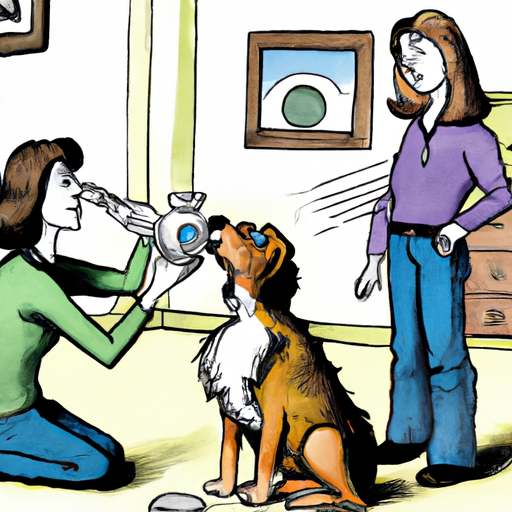Eye care is an integral part of maintaining your dog’s overall health. Just like humans, dogs can also suffer from eye infections, irritations, or foreign bodies stuck in their eyes. This guide will walk you through the process of flushing your dog’s eye safely and effectively.
Why is Eye Flushing Important?
Eye flushing, also known as eye irrigation, is a crucial procedure that helps in removing foreign bodies or irritants from a dog’s eye. It can be a crucial first-aid step if your dog gets something in his eye or suffers from an infection.
- It helps to clear debris or irritants that may cause discomfort or potential harm.
- It can soothe inflamed or irritated eyes.
- In some cases, it can help prevent further damage or infection.
What You Will Need
Before you begin, gather all the necessary supplies. These items will help you perform the procedure safely and effectively:
- Sterile saline solution: It’s essential to use a sterile saline solution designed for eye care. Never use tap water or any other liquid.
- Eye dropper or syringe: These tools will help you control the amount of solution you apply to the eye.
- Clean towel: To wipe away any excess solution and to comfort your pet afterwards.
- Protective gloves: To maintain hygiene and prevent the spread of infection.
The Procedure: Step by Step
Here’s a step-by-step guide on how to flush your dog’s eye.
- Prepare the supplies: Have your supplies ready and within reach. Make sure the saline solution is at room temperature to avoid shocking your dog’s sensitive eye.
- Calm your dog: Ensure your dog is calm and still. You might need a second person to hold your dog during the procedure.
- Apply the solution: Use the eye dropper or syringe to apply the saline solution to your dog’s eye. Aim for the inner corner of the eye, and allow the solution to flow across the eye to the outer corner.
- Let your dog blink: Allow your dog to blink, which will help spread the solution across the eye and remove the irritant.
- Dry the eye area: Pat the eye area dry with a clean towel. Be gentle and avoid rubbing the eye.
Potential Risks and When to See a Vet
While eye flushing is a generally safe procedure, there are potential risks involved. It’s important to consult a vet if:
- Your dog’s eye irritation persists after flushing.
- Your dog appears to be in pain or discomfort.
- You notice any changes in your dog’s vision or behavior.
| Symptoms | Action |
|---|---|
| Persistent redness or irritation | Consult a vet |
| Changes in vision | Consult a vet |
| Pain or discomfort | Consult a vet |
FAQ
Q: Can I use tap water to flush my dog’s eye?
No, it’s crucial to use a sterile saline solution designed for eye care.
Q: What if my dog’s eye irritation persists after flushing?
If the irritation persists, it’s best to consult a vet for further guidance.
Q: Can I perform eye flushing if my dog has a serious eye injury?
No, if your dog has a serious eye injury, seek immediate veterinary care. Eye flushing should only be done for minor irritations or to remove small foreign bodies.
By following these steps, you can help ensure your dog’s eyes stay clean and healthy. Remember, if you’re ever in doubt, always consult a professional. Your dog’s eyes are precious, so it’s crucial to take good care of them.



